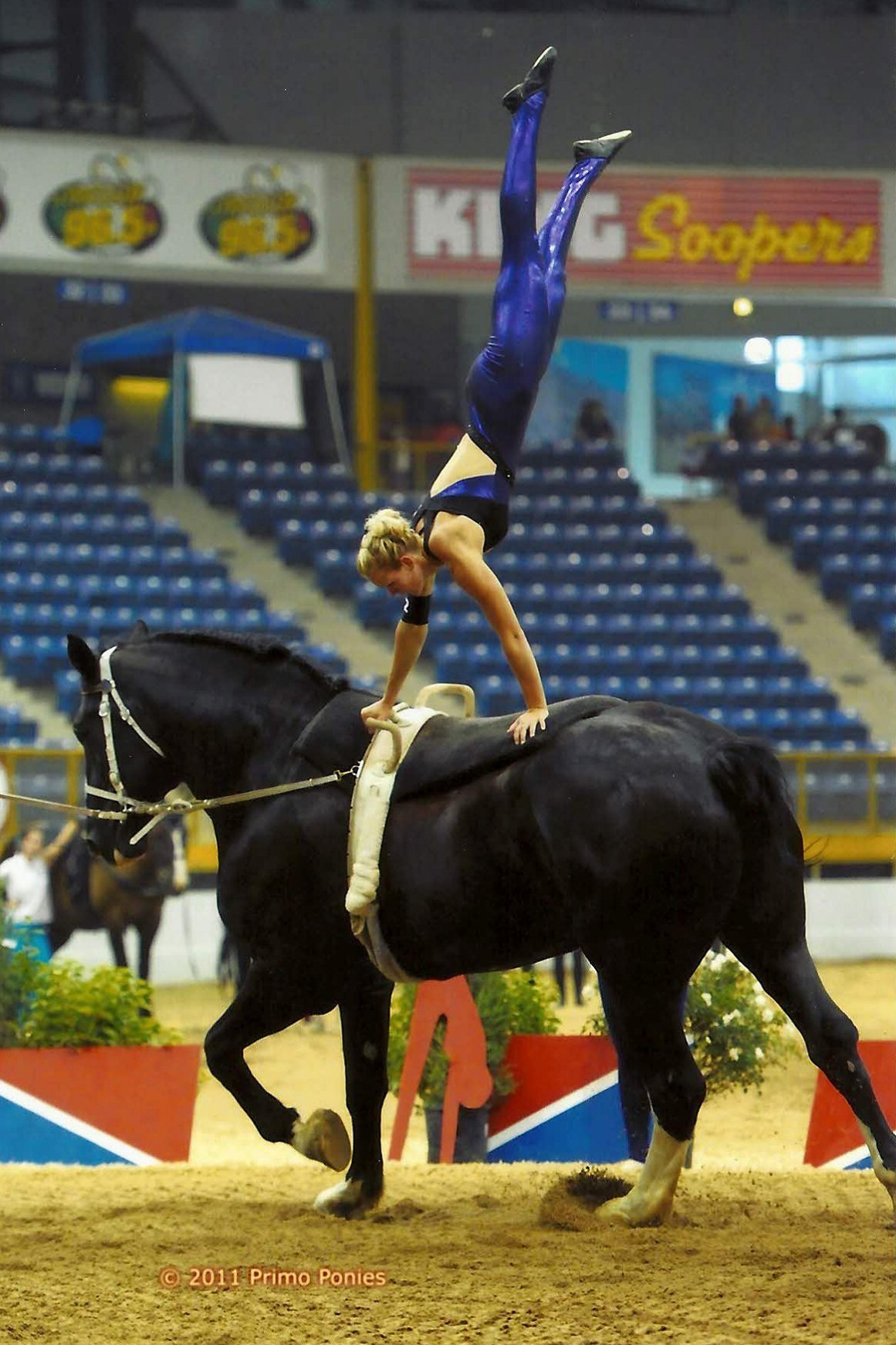Combining gymnastics, dance and artistic creativity all while on a moving horse is just the beginning of what it takes to become an equestrian vaulter.
A competition that will bring a number of competitors to Central Alberta is set to take place next weekend. The Alberta Equestrian Vaulting Association is hosting a competition at the Ponoka Ag. Event Centre on April 21st and 22nd. There will be about 60 competitors of all ages and varying levels from beginner to national level vaulters.
“It’s a very exciting sport and it brings a lot of different challenges with it. And to come to the competition it’s very exciting to watch and it’s a lot of fun,” said Jeanine van der Sluijs, 25. “The easiest way to describe our sport is gymnastics and dance on moving horses.”
The horse is controlled by a lunger who sends him in a circle on the end of a lunge line which is attached to the bridle the horse wears on his head. The horse also wears a special surcingle around his belly which has handgrips and stirrup-like loops for the vaulter’s feet.
Jeanine and her sister Angelique van der Sluijs, 23, are two of the founding members of Meadow Creek Vaulting Club from Olds. Both young women have grown up being involved in the sport.
Jeanine has been involved in vaulting since she was six years old and Angelique got started when she was eight. The van der Sluijs, originally from Holland, were introduced to the sport there. When they moved to Canada 11 years ago they started their own club with the rest of their family.
“At the time there wasn’t very much vaulting in Alberta so we got our club going and there was another club in Calgary that started and not long after that some other clubs started popping up,” said Jeanine.
Today, the interest in equestrian vaulting is growing.
“We get many different kids that start vaulting. Some have riding experience; some have done gymnastics and are looking for a different challenge. We get a lot of kids that love horses and they don’t get a chance to be around them any other way and vaulting is a great sport for that because they can share a horse or the club owns the horse and they can use it,” said Jeanine. “The kids get to learn the basics of horse care and it’s also a great way for them to learn strength and balance and coordination.”
Vaulting has been compared to trick riding, but Jeanine said the two sports are very different.
“We get a lot of that in Alberta but it’s not really the same. If you think about it trick riding is more of a western discipline, so the style you would see more at rodeos. Vaulting also performs at rodeos but it’s more along the English line. The focus is different,” she said. “Trick riding is based a lot more on entertainment. The vaulting is very much based on skill development and safety is a big priority as well. You learn to fall off the horse properly and all the moves we do on the horses are based on balance. You have to be in balance and in harmony with your horse.”
There are different levels the vaulters compete at including walk, trot and canter. There are two rounds of competition including where the vaulters showcase their basic movements that test balance, strength, flexibility and harmony with their horse. The second round of competition is where vaulters get to pick their music and develop a choreographed routine.
“You really get to show off your personality in your routine and really have fun with it,” said Jeanine.
Both women said being involved with equestrian vaulting has taught them many things.
“Most importantly, it has taught me teamwork. At any level if you are competing as an individual you are still part of a team. It’s you and your horse, your lunger and your coach. You are all part of a team and it’s a team effort to help the vaulters improve,” said Jeanine.
Angelique added the sport also teaches responsibility.
“You take care of your horse and the older vaulters look after younger vaulters and you become a role model for them,” she said.
In addition, to train a horse in the sport of vaulting can take up to three or four years.
“One of the biggest things we look for when purchasing a horse for vaulting is their character. They have to be willing to work, they have to be accepting of all the different things we’re going to throw at them because we’re moving all about the horse. They really have to be easy-going,” said Jeanine.
Meanwhile, next weekend’s competition in Ponoka will run from 8:30 a.m. to 5 p.m. on Saturday and 8:30 a.m. to 3 p.m. on Sunday. The general public is welcome and there is no charge for admission.
For more information, check out www.vaultcanada.org/aeva.
efawcett@reddeerexpress.com



